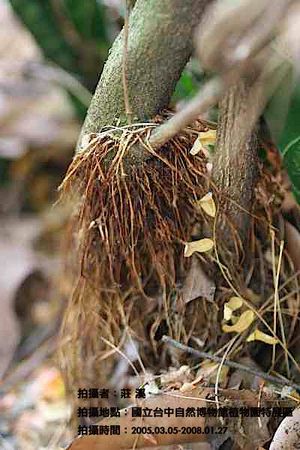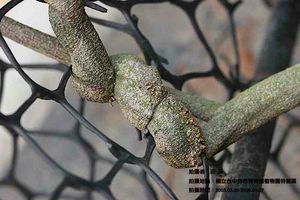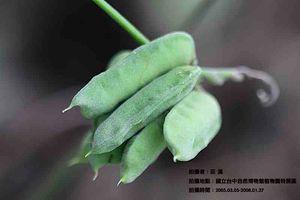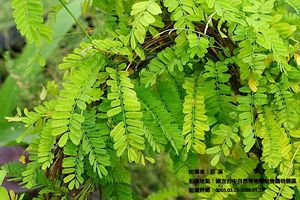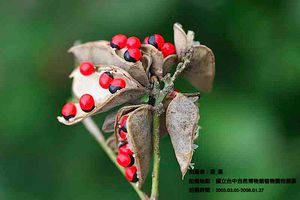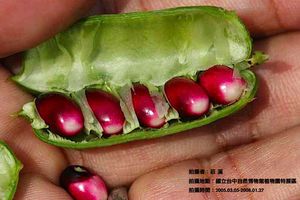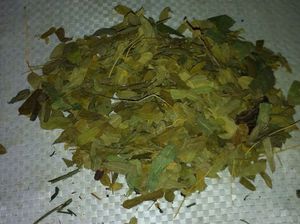羊躑躅
出自台灣有毒中草藥毒性資料庫
(→毒性研究) |
(→參考文獻) |
||
| 第98行: | 第98行: | ||
=='''參考文獻'''== | =='''參考文獻'''== | ||
| - | + | 1. Chen SN, Zhang HP, Wang LQ, Bao GH, Qin GW. [http://www.ncbi.nlm.nih.gov/pubmed/15568787 Diterpenoids from the flowers of Rhododendron molle.] ''Journal of Natural Products'' 2004; 67:1903-1906. | |
| - | + | 2. Hikino H, Ohta T, Ogura M, Ohizumi Y, Konno C, Takemoto T. [http://www.ncbi.nlm.nih.gov/pubmed/1265747 Structure-activity relationship of ericaceous toxins on acute toxicity in mice.] ''Toxicology and Applied Pharmacology'' 1976; 35:303-310. | |
| - | + | 3. Cheng XA, Xie JJ, Hu MY, Zhang YB, Huang JF. [http://www.ncbi.nlm.nih.gov/pubmed/21499219 Induction of intracellular Ca2+ and pH changes in Sf9 insect cells by rhodojaponin-III, a natural botanic insecticide isolated from Rhododendron molle.] ''Molecules'' 2011; 16:3179-3196. | |
| + | |||
| + | 4. Zhong G, Hu M, Wei X, Weng Q, Xie J, Liu J, et al. [http://www.ncbi.nlm.nih.gov/pubmed/15974620 Grayanane diterpenoids from the flowers of Rhododendron molle with cytotoxic activity against a Spodoptera frugiperda cell line.] ''Journal of Natural Products'' 2005; 68:924-926. | ||
| + | |||
| + | 5. Bao GH, Wang LQ, Cheng KF, Feng YH, Li XY, Qin GW. [http://www.ncbi.nlm.nih.gov/pubmed/12802725 Diterpenoid and phenolic glycosides from the roots of Rhododendron molle.] ''Planta Medica'' 2003; 69:434-439. | ||
| + | |||
| + | 6. Li CJ, Wang LQ, Chen SN, Qin GW. [http://www.ncbi.nlm.nih.gov/pubmed/11000022 Diterpenoids from the fruits of Rhododendron molle.] ''Journal of Natural Products'' 2000; 63:1214-1217. | ||
| + | |||
| + | 7. Wang S, Lin S, Zhu C, Yang Y, Li S, Zhang J, et al. [http://www.ncbi.nlm.nih.gov/pubmed/20222684 Highly acylated diterpenoids with a new 3,4-secograyanane skeleton from the flower buds of Rhododendron molle.] ''Organic Letters'' 2010; 12:1560-1563. | ||
| - | |||
| - | |||
| - | |||
| - | |||
| - | |||
[9] Stephen Benson SO, and Alexander Pihl. [http://onlinelibrary.wiley.com/doi/10.1111/j.1432-1033.1975.tb02484.x/abstract On the Mechanism of Protein-Synthesis Inhibition by Abrin and Rich.] ''European Journal of Biochemistry'' 1975; 59: 573-580. | [9] Stephen Benson SO, and Alexander Pihl. [http://onlinelibrary.wiley.com/doi/10.1111/j.1432-1033.1975.tb02484.x/abstract On the Mechanism of Protein-Synthesis Inhibition by Abrin and Rich.] ''European Journal of Biochemistry'' 1975; 59: 573-580. | ||
在2011年11月17日 (四) 13:09所做的修訂版本
目錄 |
基本資料
|
科別 | <font size=3杜鵑花科 Ericaceae</font> |
|
屬名 | 杜鵑花屬 Rhododendron |
|
中文學名 | 羊躑躅 |
|
拉丁學名 | Rhododendron molle G. Don |
|
英文名稱 | jequirity bean,rosary pea,precatory bean,crab's-eye |
|
中文俗名 | 鬧羊花 |
植物圖片
|
雞母珠莖鬚 |
雞母珠莖 |
雞母珠未成熟果實 | |
|
雞母珠葉 |
雞母珠成熟果實1 |
雞母珠成熟果實2 |
藥材圖片
|
雞母珠葉 |
雞母珠簡介
羊躑躅為杜鵑花屬(Rhododendron)杜鵑花科(Ericaceae)之有毒植物,廣泛的分佈於中國大陸之南部地區,在傳統用藥當中羊躑躅的花及果實常被用於止痛以及做為殺蟲劑(1, 2)。在過去文獻之研究報告指出羊躑躅對於哺乳動物具有急性之毒性以及對於昆蟲具有系統性(神經、消化、內分泌和生殖系統)的毒性(3, 4)。
外觀簡述
藤狀灌木(climbing shrub),外觀型態上具有許多分枝,分枝細且長。葉長約5-8公分,羽狀對生,落葉性,每一分枝上約有20-40片小葉。花呈腋生總狀花序,花冠紅或白色,豆莢長約2.5-4公分,每一豆莢內含約4-6個種子,種子呈鮮紅色,臍眼為黑色,外殼堅硬。
產地
大多分佈於中國大陸之南方以及西南方(5)。
毒性研究
根據文獻指出,羊躑躅具有昆蟲毒性可以做為殺蟲劑使用(1, 5)。雖然有文獻提到羊躑躅對於哺乳類動物具有毒性(2),但在過去的相關文獻並沒有進一步的對於哺乳動物之毒性進行研究,也並沒有食用羊躑躅導致人類中毒的案例報告。但羊躑躅內含成分中在大鼠實驗用發現具有降低血壓以及心率減緩之作用,隨然看似為具有治療心血管疾病之功效(6),但其降血壓及心率減緩之作用也可能變成不可預期之副作用。
- 有毒成份
羊躑躅內含超過20種之二萜類化合物被分離出來,分離出來主要為ent-kaurane骨架之衍生物,其衍生為分為grayanane和kalmane這兩類的二萜類化合物(7),其中grayanane 萜類之Rhodojaponin III被發現此為殺蟲的主要成分,然而Rhodojaponin III也被發現具有降低血壓及心率緩解的作用(6),但如果誤用可能會導致血壓過低或是心率過低之現象。此外也發現rhodomolins A 與rhodomolins B被發現具有細胞毒性(4)。
- 機轉
根據文獻指出Rhodojaponin III會抑制昆蟲細胞的增殖以及影響細胞分裂周期,使細胞停留在G2/M。Rhodojaponin III會造成細胞內的鈣離子不平衡,使細胞內之pH值改變,導致胞漿鹼化或酸化(3)。Rhodojaponin III之降血壓作用被認為可能與α2-adrenoceptors有關(6),然而對於哺乳類動物之毒性機轉尚未被研究報導出。
- 中毒劑量
過去文獻指出使用靜脈1.0 mg以及2.0 mg之劑量可以將血壓分別降低28.2%以及34.4%(6),雖然羊躑躅具有降血壓之效過,但如誤用或是劑量過大時可能會導致血壓過度降低之副作用。
治療方式
目前臨床治療均以支持性療法治療,先予以洗胃或催吐,再配合靜脈輸注及活性炭給予,並依照出現之中毒症狀給予適當治療。
毒性分級
參考文獻
1. Chen SN, Zhang HP, Wang LQ, Bao GH, Qin GW. Diterpenoids from the flowers of Rhododendron molle. Journal of Natural Products 2004; 67:1903-1906.
2. Hikino H, Ohta T, Ogura M, Ohizumi Y, Konno C, Takemoto T. Structure-activity relationship of ericaceous toxins on acute toxicity in mice. Toxicology and Applied Pharmacology 1976; 35:303-310.
3. Cheng XA, Xie JJ, Hu MY, Zhang YB, Huang JF. Induction of intracellular Ca2+ and pH changes in Sf9 insect cells by rhodojaponin-III, a natural botanic insecticide isolated from Rhododendron molle. Molecules 2011; 16:3179-3196.
4. Zhong G, Hu M, Wei X, Weng Q, Xie J, Liu J, et al. Grayanane diterpenoids from the flowers of Rhododendron molle with cytotoxic activity against a Spodoptera frugiperda cell line. Journal of Natural Products 2005; 68:924-926.
5. Bao GH, Wang LQ, Cheng KF, Feng YH, Li XY, Qin GW. Diterpenoid and phenolic glycosides from the roots of Rhododendron molle. Planta Medica 2003; 69:434-439.
6. Li CJ, Wang LQ, Chen SN, Qin GW. Diterpenoids from the fruits of Rhododendron molle. Journal of Natural Products 2000; 63:1214-1217.
7. Wang S, Lin S, Zhu C, Yang Y, Li S, Zhang J, et al. Highly acylated diterpenoids with a new 3,4-secograyanane skeleton from the flower buds of Rhododendron molle. Organic Letters 2010; 12:1560-1563.
[9] Stephen Benson SO, and Alexander Pihl. On the Mechanism of Protein-Synthesis Inhibition by Abrin and Rich. European Journal of Biochemistry 1975; 59: 573-580.
[10] Dickers KJ, Bradberry SM, Rice P et al. Abrin poisoning. Toxicological Reviews 2003; 22: 137-142.
[返回上一頁]
